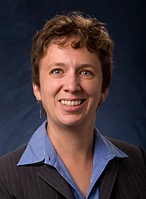 A recent study released from the Institute for Women’s Policy Research (IWPR) reveals that much progress has been made to close the patent gender gap over the last four decades. Sadly, despite the fact that the number of women inventors has quintupled since the 1970s, less than 20% of issued U.S. patents have at least one woman inventor and only 7.7% of issued U.S. patents list a woman as the primary inventor. Much work still needs to be done in order to take advantage of the vast resources of creative potential in this largely untapped talent pool.
A recent study released from the Institute for Women’s Policy Research (IWPR) reveals that much progress has been made to close the patent gender gap over the last four decades. Sadly, despite the fact that the number of women inventors has quintupled since the 1970s, less than 20% of issued U.S. patents have at least one woman inventor and only 7.7% of issued U.S. patents list a woman as the primary inventor. Much work still needs to be done in order to take advantage of the vast resources of creative potential in this largely untapped talent pool.
To further the discussion, I recently conducted a roundtable interview with three women who have given this matter a great deal of thought. One of them, Jennifer Gottwald (pictured left) is a Licensing Manager in the Technology Commercialization Department at the Wisconsin Alumni Research Foundation (WARF). I asked her whether there are fewer women on patents simply because there are fewer women in STEM fields? Her answer: No. The lack of women as inventors who use the patent system goes beyond the mere fact that fewer women pursue STEM careers.
Here is our exchange:
QUINN: After I published the article about the patent gender gap report, I received a call from a patent examiner. This patent examiner has been an adjunct professor at the university level teaching various math and science courses for about 30 years. He also has several daughters. He told me that, based on his perspective, the problem isn’t with women, but rather it is with girls because they fall off the science and math path so early in the process for a variety of reasons — maybe stereotyping, maybe they’re steered in different directions — and I wanted to get your take on that. Jennifer, what do you think about that? What can be done? I know you have a Ph.D. yourself and obviously you’ve pursued a science career, and I know a lot of women at WARF do as well, but that’s not the common experience, I guess.
GOTTWALD: No, I think that’s a good point, Gene, and I think it is something that hopefully all women in science and technology are aware of. There are still instances where you end up being the only woman in the room. And I think that we do recognize the need to not only encourage more girls in STEM fields, but to keep that going as they grow older through high school, through college, through graduate education, and also into their careers. I do want to emphasize though that in the work we’ve been doing with the AUTM Women Inventors Committee, we are finding that when the schools that are starting to measure their invention disclosure and their patent filings, again with at least one woman represented, even when they control for the percentage of female faculty members within a given department, for instance, they’re still finding that yes, there are fewer women represented but those fewer women that are represented are not filing as many invention disclosures as their male counterparts. So while we do need to concentrate on changing the culture and on making sure that girls and women are encouraged within these fields, we also have to, I think, for the sake of our economy, concentrate on women who are in these fields and are working and make sure that they also know about the patent process and find that accessible to them.
QUINN: So this goes beyond there being fewer women in math and sciences. This is a front end problem and it is a demonstrable back end problem also.
GOTTWALD: Yes, that is correct. I think different organizations are tackling this at different points but we do need to work on it all along that pipeline. The dearth of women in patenting and entrepreneurship cannot be explained completely by the lower numbers of women in STEM careers.
To read the entire interview with Dr. Gottwald and others, please see: The Patent Gender Gap Goes Beyond Fewer Women in Math and Sciences.
Tags: gender gap, Jennifer Gottwald, patent, patents, women entrepreneurs, women inventors




You share in the PLI Practice Center community, so we just ask that you keep things civil. Leave out the personal attacks. Do not use profanity, ethnic or racial slurs, or take shots at anyone's sexual orientation or religion. If you can't be nice, we reserve the right to remove your material and ban users who violate our Terms of Service.